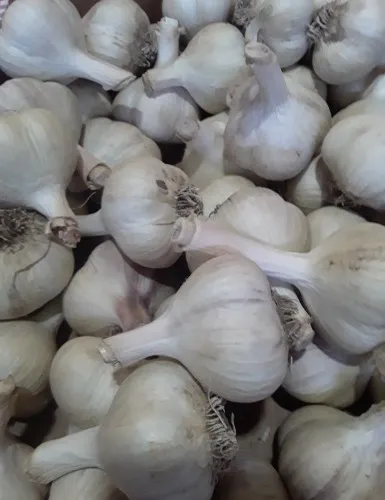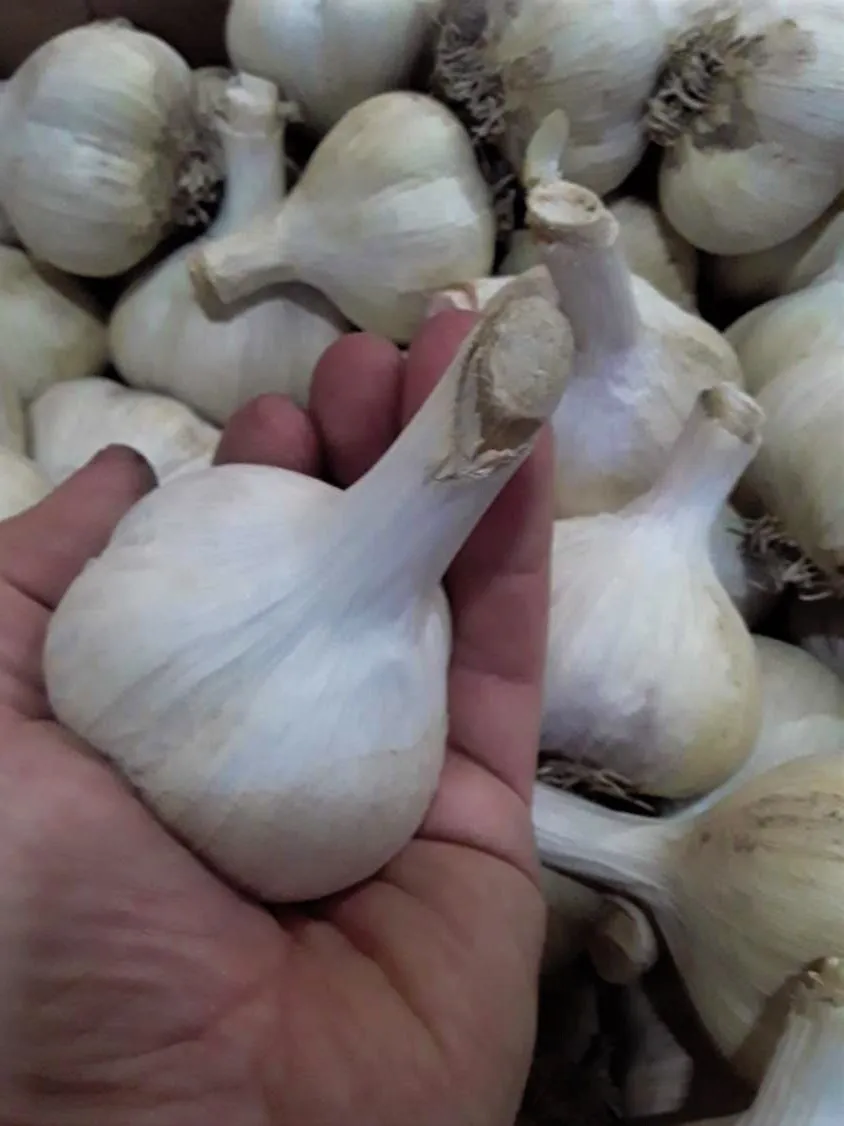Gustavus Garlic Planting Guide
How to grow the best garlic in Southeast Alaska:

Garlic is the best! It adds flavor, nutrition and spice to life! Growing juicy, full flavored garlic is highly satisfying as it doesn't take a lot of attention and time to grow great garlic. Most people love the extra large-cloved Porcelain varieties that grow well in Gustavus. But they can also be a trap as their thick stems are harder to dry and become vectors for fungi if not not dried perfectly. I suggest growing a few different types- for the diversity or your harvest and flavors in your kitchen. Purple stripe varieties like Red Chesnok and Killarney Red also perform well in Southeast Alaska and are purported to have the best flavors overall. Garlic stores well for the winter and is easy to keep on hand throughout the year.
And garlic helps ward away those nasty ills we don't want getting stuck in our lungs or digestive systems. In the wet climate of southeast where I have developed severe allergies to mold, concentrated garlic capsules are one of the key remedies that keep my allergies at bay.
How much garlic do you want to grow?
For my household I keep a minimum of one head per week, so about 53 heads for a year. I use my garlic fresh from August until May or June. Heads that are small or imperfect (lets estimate that for me that's at least another 25 heads) I dry and use as seasoning during the year and for my kitchen garlic needs in the summer.
Porcelain varieties will only give you 4 seeds per head to plant so it takes much more Porcelain seed to plant your crop.
Purple Stripes and Rocamboles will give an average of 6 plantable cloves per head, making planting go much faster!

PLANTING
The most important time for garlic is the fall. My goal is to plant the 3rd week of September as you want the garlic to form a nice root but you don't want it to sprout. The size of the garlic you will harvest the following year is determined by its' growth during the autumn to early winter that you plant it.
Some gardeners dig their amendments into the soil a few weeks before planting their garlic seed so that when they pop their seed into the ground nutrients are available for the seed to grow optimally. Make sure to put lots of good organic amendments in your bed now or prior to planting as this fall's root development is the crucial factor to determining next year's growth.
I don't have enough time for that so I dig compost, seaweed, and fish bone meal into my soil right before planting my cloves. NOTE that in Gustavus/Southeast Alaska you will want good fencing if you are going to use fish meal or fish bone meal as it attracts dogs and could attract bears. I rationalize that the powder of the fish bone meal will be available fairly quickly and the compost and seaweed will be available over a longer period. So far this works but I haven't tested whether putting amendments into the soil prior to planting produces better yields. Let me know if you have!
You will want to plant the biggest nicest cloves. The experts say that overall bulb weight is the best determining factor for size. I just plant my biggest nicest cloves and keep small cloves for use in the kitchen. Similar to when you plant potatoes you are cloning garlic not planting true seed, so pick the head shapes and sizes you want to keep perpetuating in your future crop.
- Carefully split apart the head planting cloves with the wide base at the bottom and the pointy tip facing toward the sky. Be careful not to damage the clove you are planting as this becomes a vector for disease.
- Do NOT plant cloves or heads that appear moldy or damaged. Mold or fungal growth or spots on cloves can indicate that your crop and/or you soil has a infection. Botrytis and Fusarsium are infections that the wet soils of Southeast Alaska can cause to proliferate and the really disappointing news is that once these diseases are in your soil they can plague other crops as well. Our farm is currently experimenting with Plant Helper beneficial fungi as a way to mitigate fungal diseases that thrive in Southeast Alaska's wet conditions. Contact us if you are interested in trying this beneficial fungi that is native to Alaska soils.
- I plant cloves about 6-8" apart from one another. To get more garlic in a bed I stagger the plantings like this:
X X X X
X X X
X X X X
- I plant about 3" deep, then cover with dirt, smoothing and lightly tamping the surface with rake. Then cover with as many leaves as you can -- anywhere from 4" -8" is great.
- Most Southeast gardeners (including myself ) cover their bed with a layer of plastic for the winter to protect from winter rains. I sell biodegradable corn based plastic for this purpose. In early spring you will want to remove the plastic when the garlic shoots start pushing it up. I re-use the plastic elsewhere as a grass suppressant.

Happy Planting
